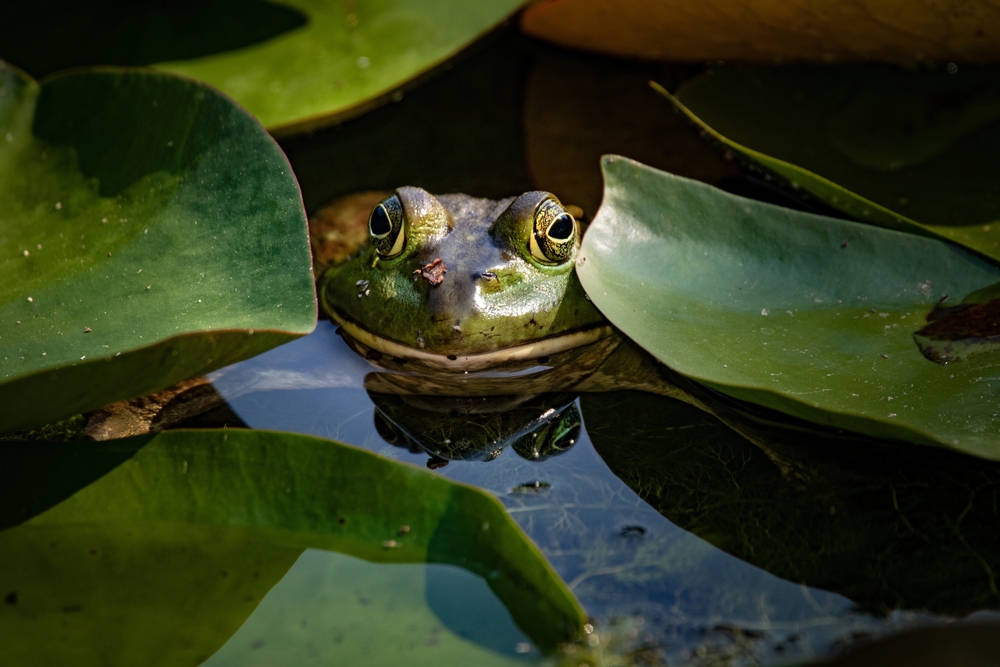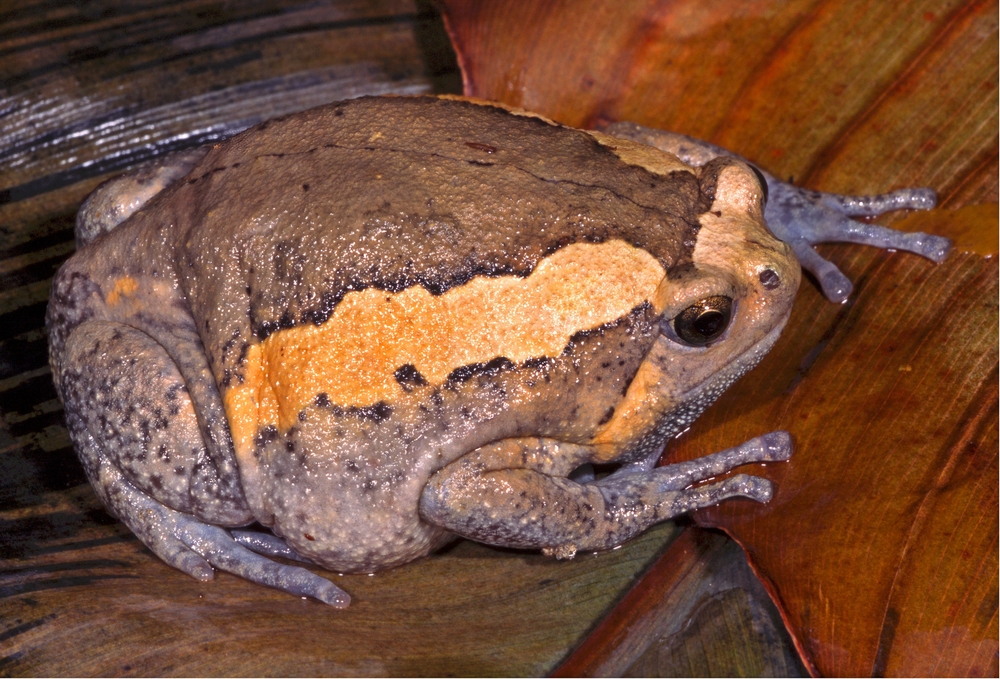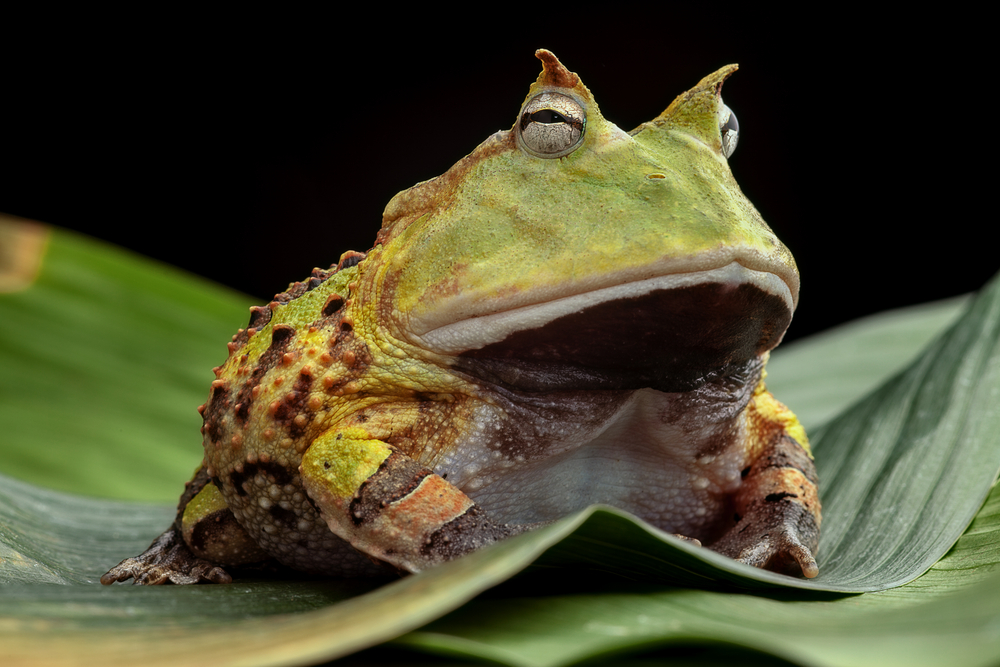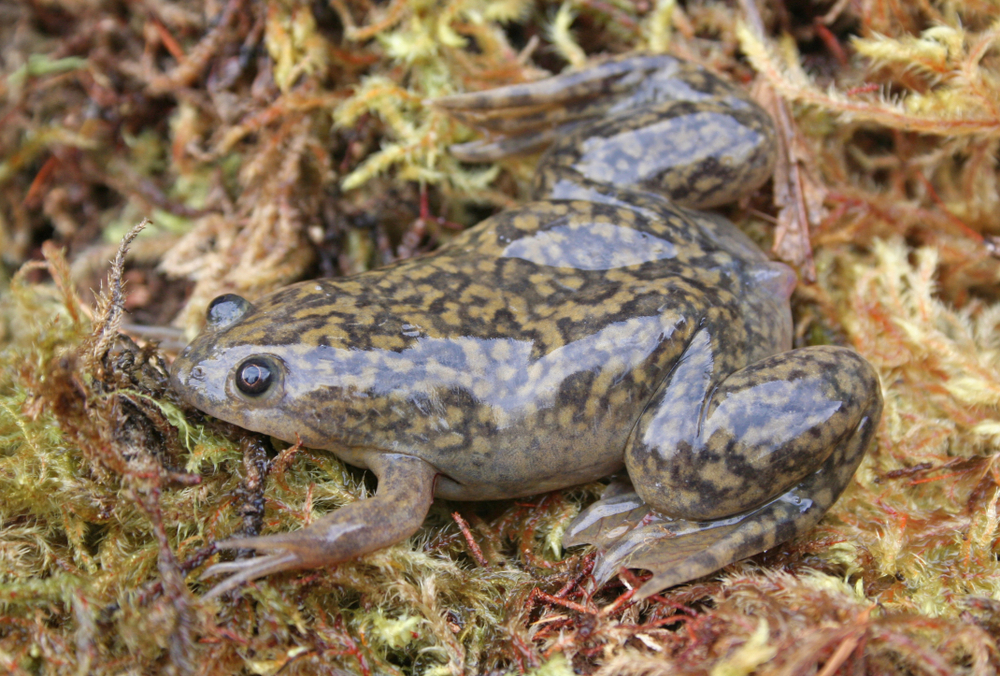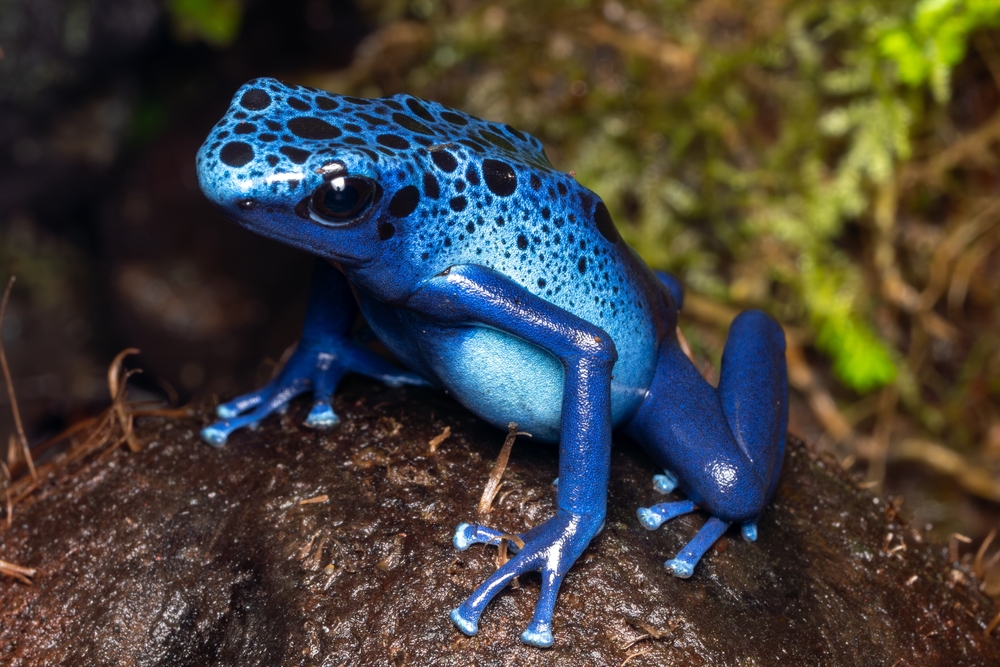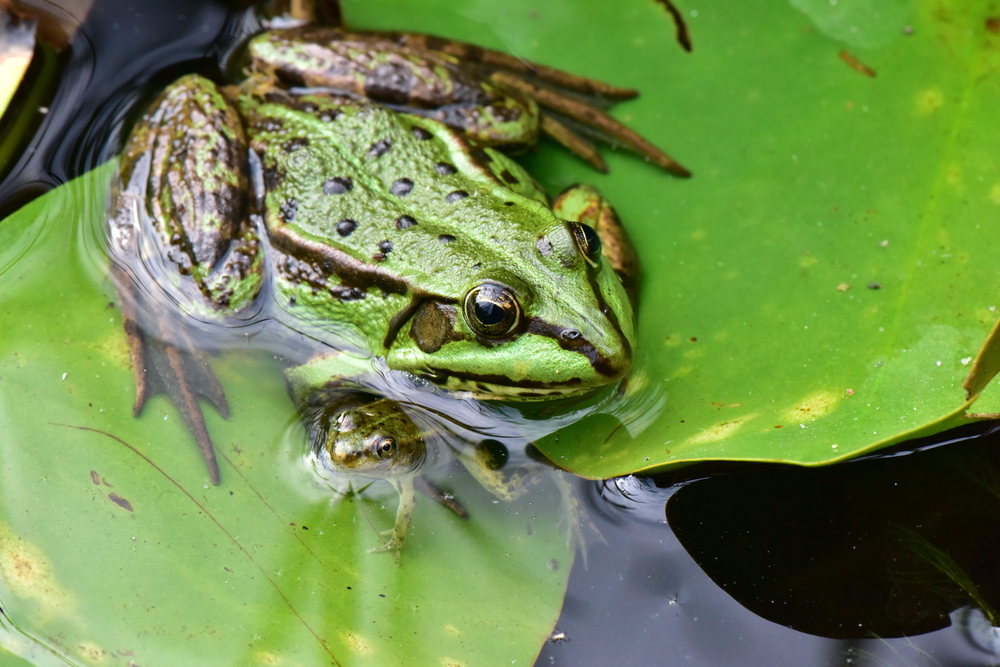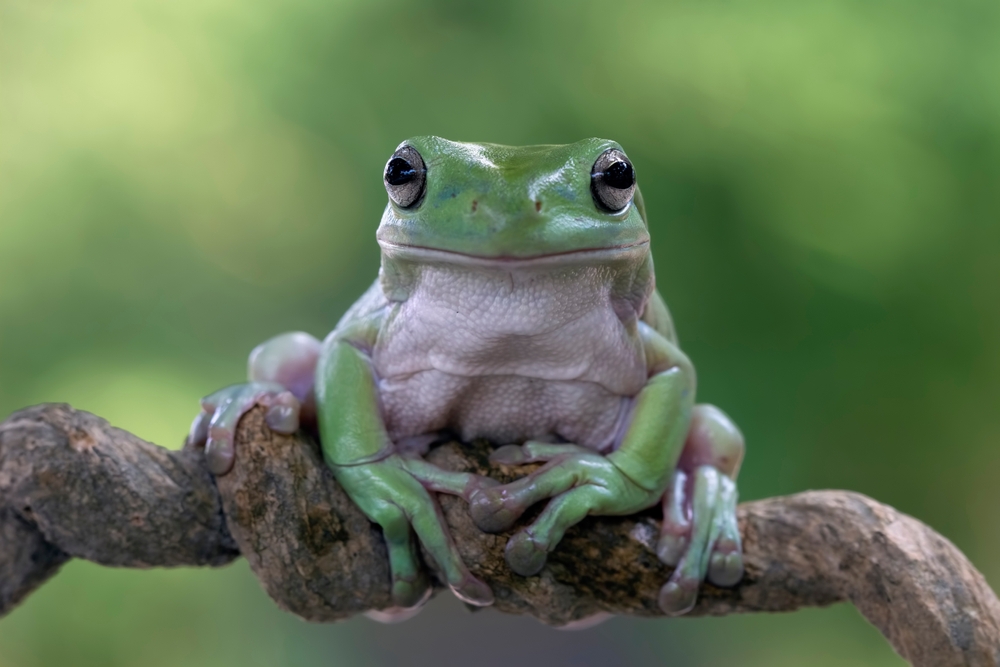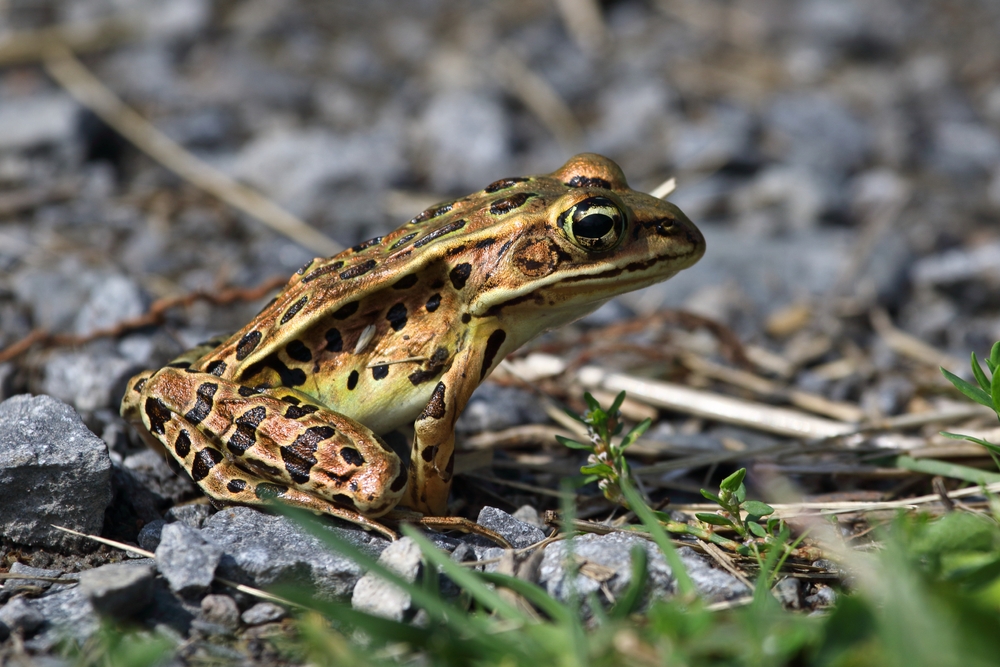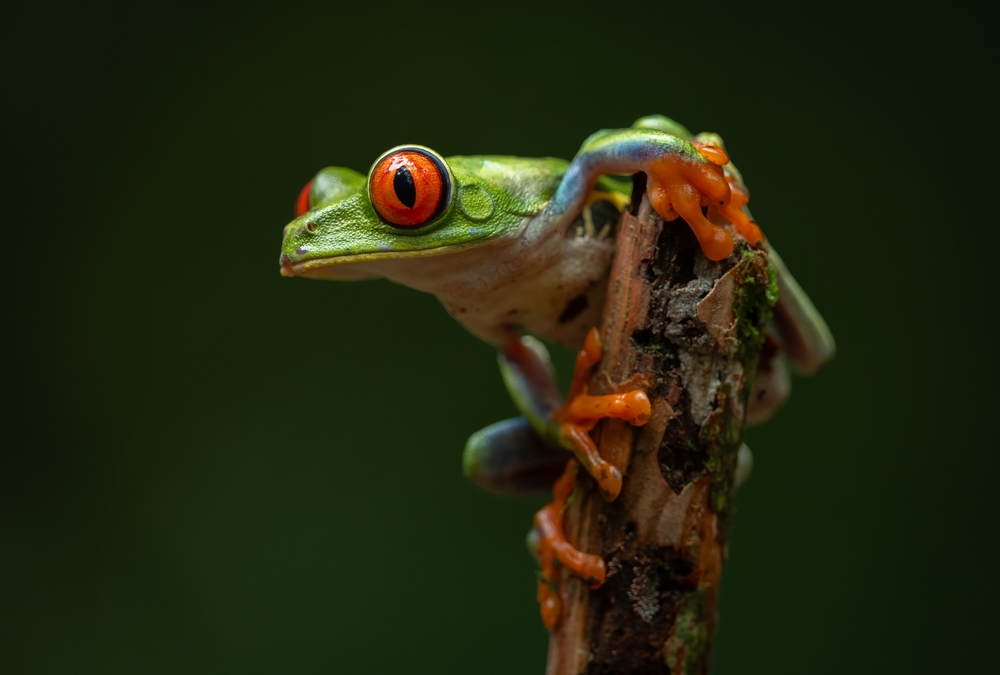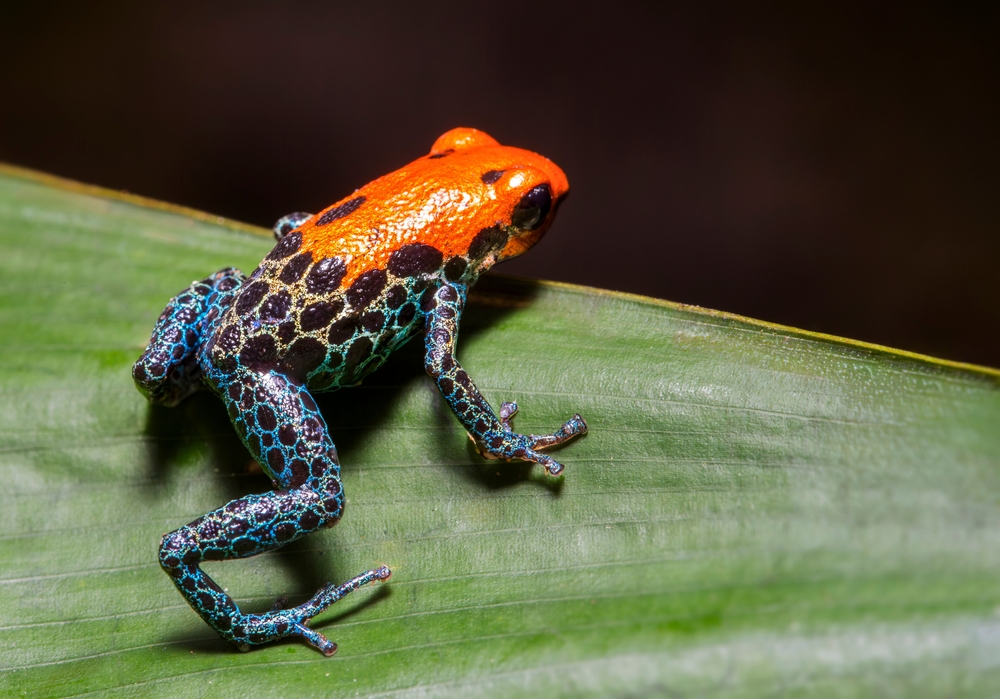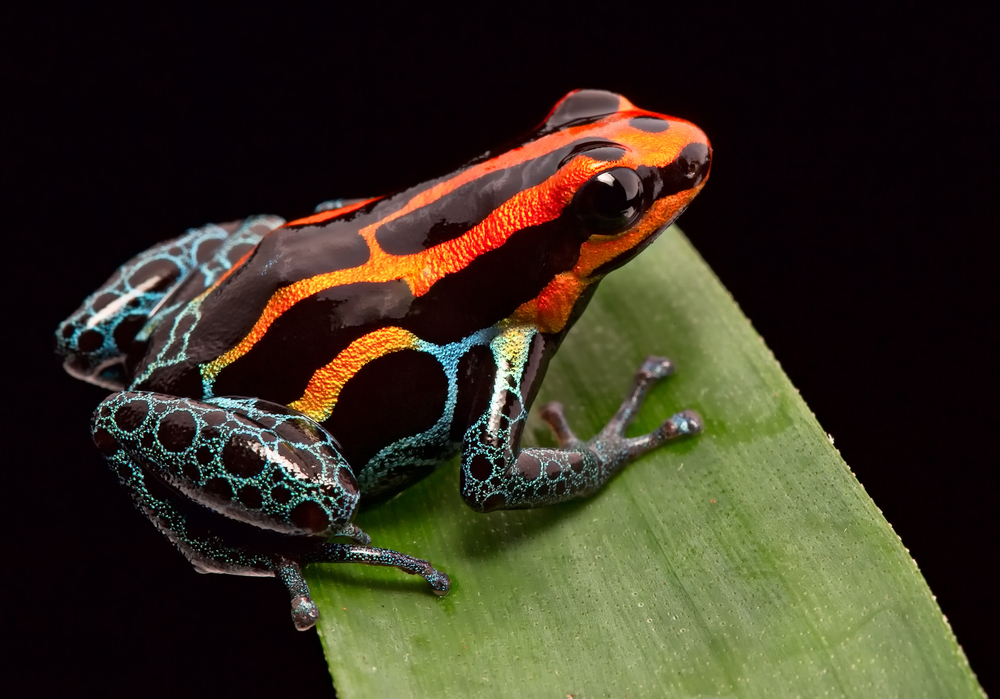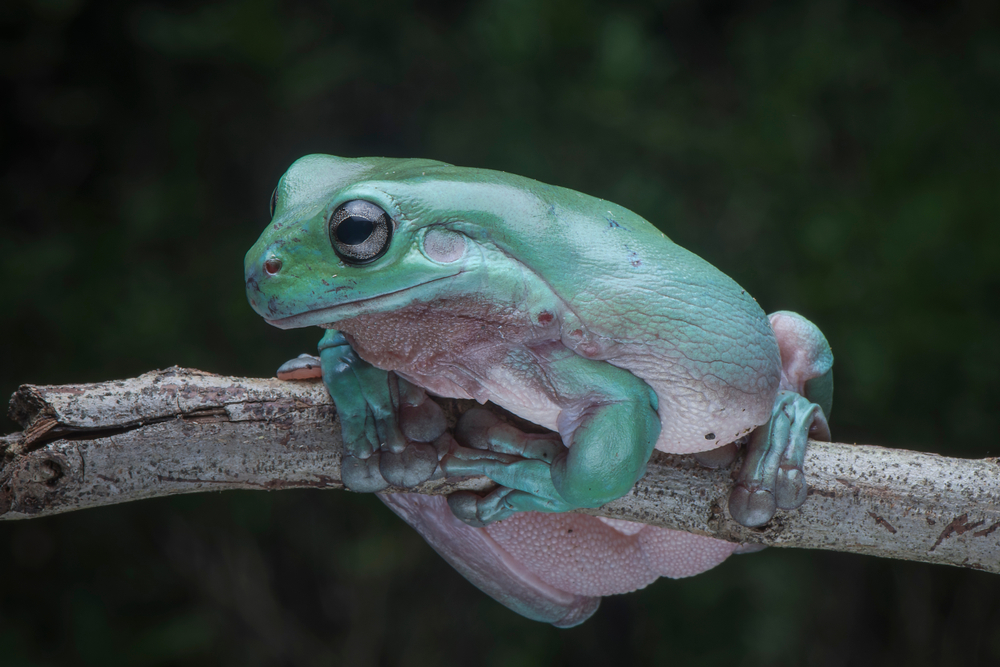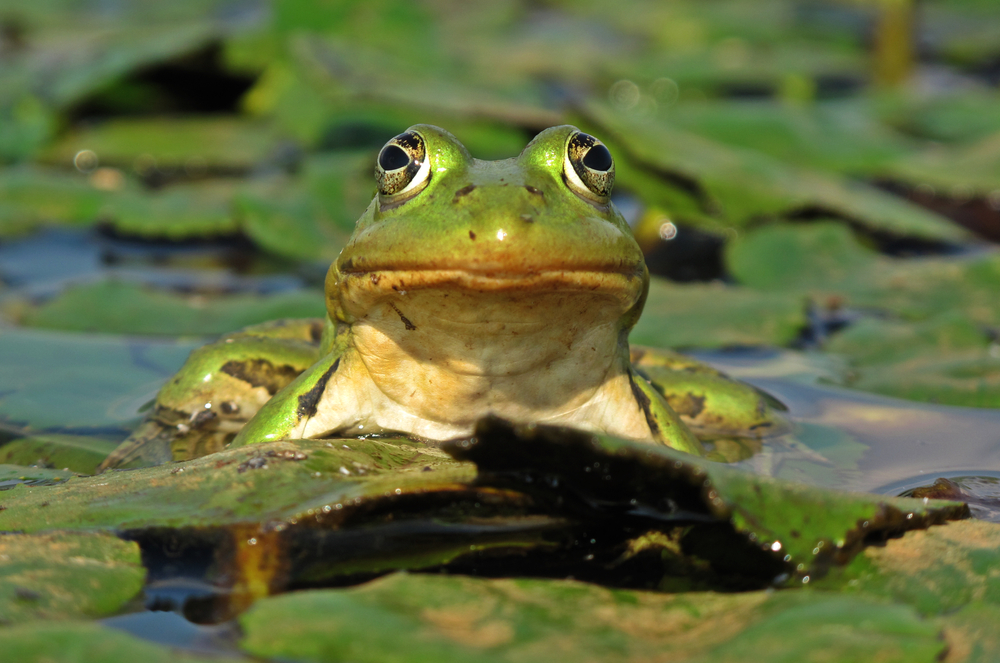Uniqueness
Largest Frog in North America:
The American Bullfrog is the largest native frog species in North America. Adult bullfrogs can reach up to 8 inches (20 cm) in length and over 1.5 pounds (700 g) in weight, making them an apex amphibian predator in many freshwater ecosystems.
Extremely Broad Diet:
Bullfrogs are known for their exceptionally opportunistic feeding behavior. They eat almost anything they can overpower and swallow—ranging from insects to small mammals and even other bullfrogs. This indiscriminate predation, including cannibalism, sets them apart from most frog species.
Booming Vocalization:
The male bullfrog’s call, often described as a deep “jug-o-rum”, is one of the loudest and most recognizable amphibian calls in the animal kingdom. These calls can carry over long distances and are used to establish territory and attract mates during breeding season.
Long Larval Stage:
Unlike many frogs whose tadpoles metamorphose in weeks or months, Bullfrog tadpoles can take up to two years to transform into froglets, especially in cooler climates. This extended larval stage allows for greater size and development before emerging on land.
Aquatic Adaptation and Dominance:
Bullfrogs are highly aquatic and excel at swimming, with powerful webbed hind feet. They dominate permanent bodies of water like lakes and ponds, often outcompeting or preying on other amphibian species, which has contributed to their success—but also to their invasiveness.
Invasive Species Worldwide:
Native to eastern North America, Bullfrogs have been introduced to many parts of the world (e.g., western U.S., Europe, Asia, South America) for food and the pet trade. In these areas, they often become invasive, disrupting ecosystems by eating native wildlife and spreading disease such as chytrid fungus.
Commercial Importance:
Bullfrogs have been widely farmed for:
-
Frog legs (a culinary delicacy in many cultures)
-
Dissection and scientific research
-
Pet and live food markets
This commercial use has expanded their global footprint and raised concerns about ecological impact and humane treatment.
Thermoregulatory Behavior:
Bullfrogs often bask in shallow water or on vegetation to regulate body temperature. Their ability to thermoregulate allows them to remain active in cooler conditions and extend their seasonal range farther north than many amphibians.



































































